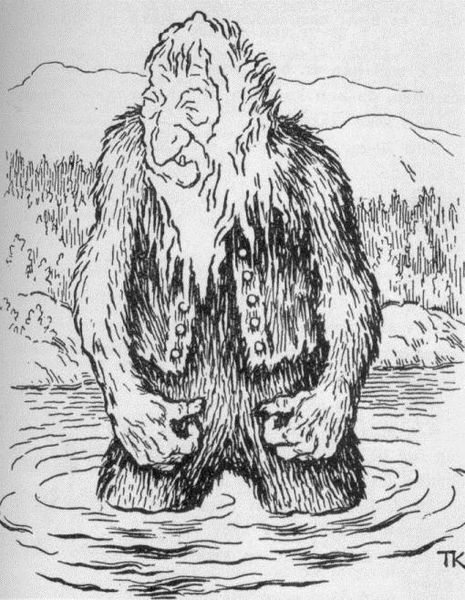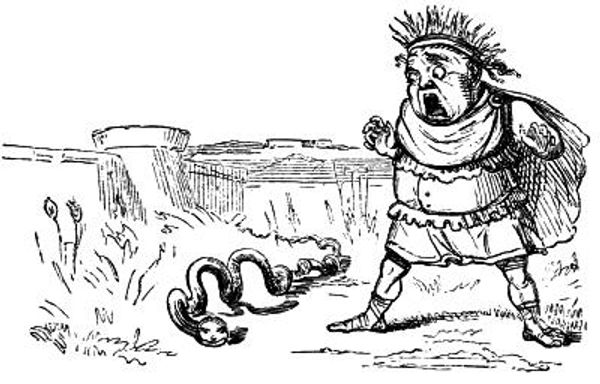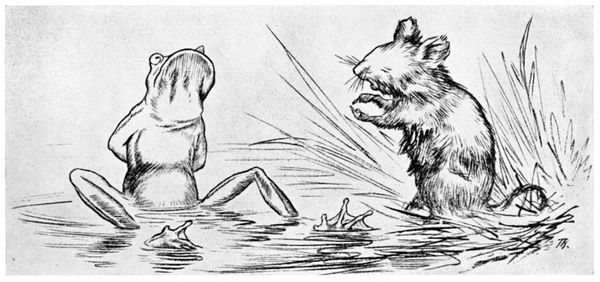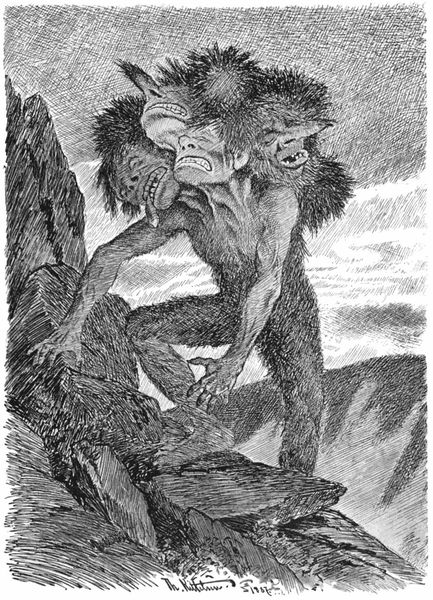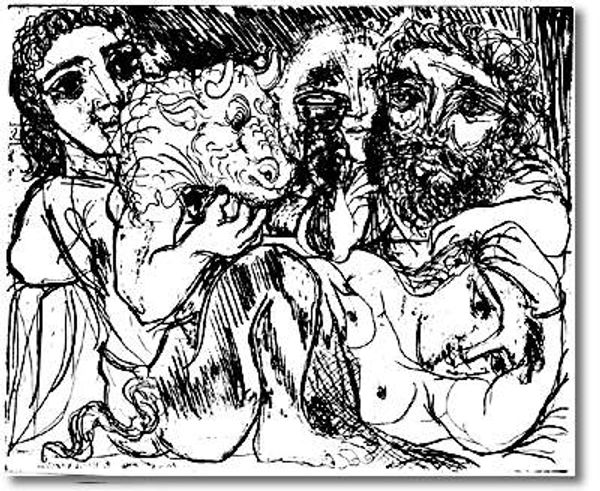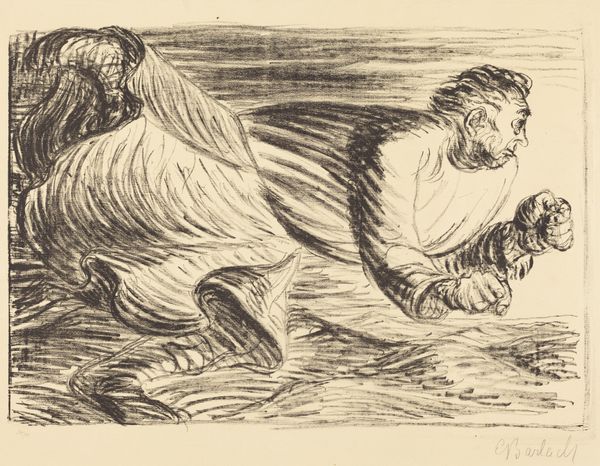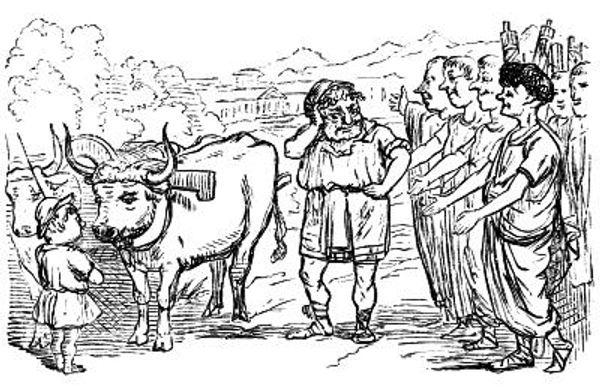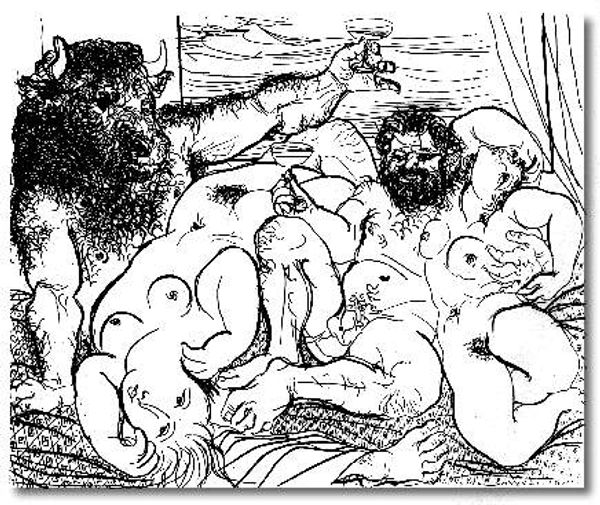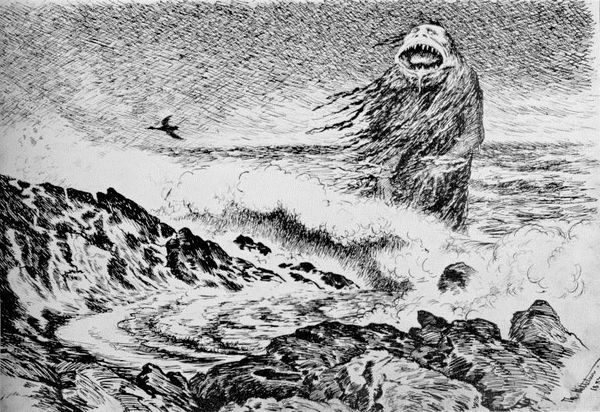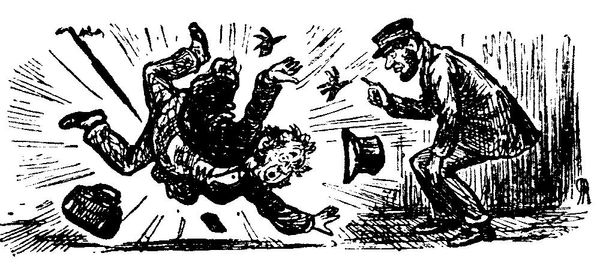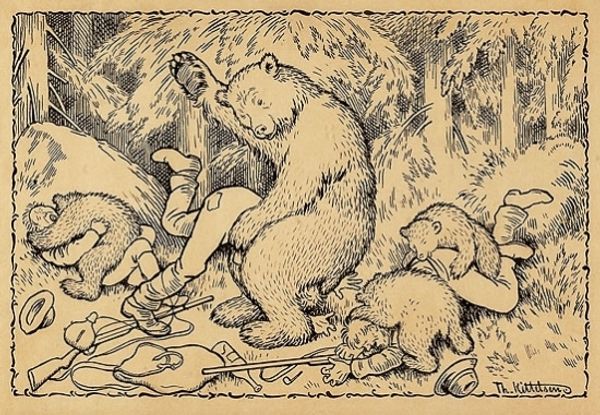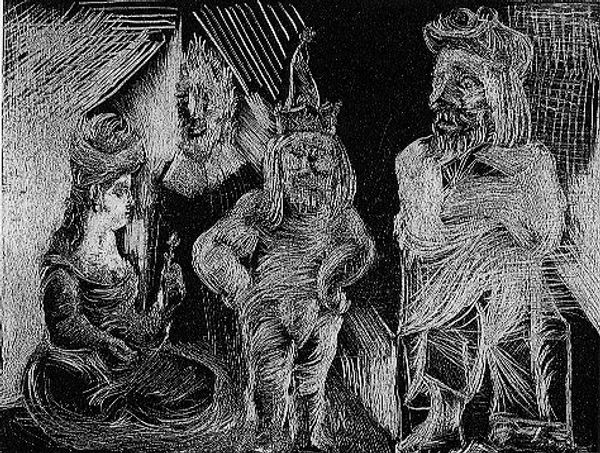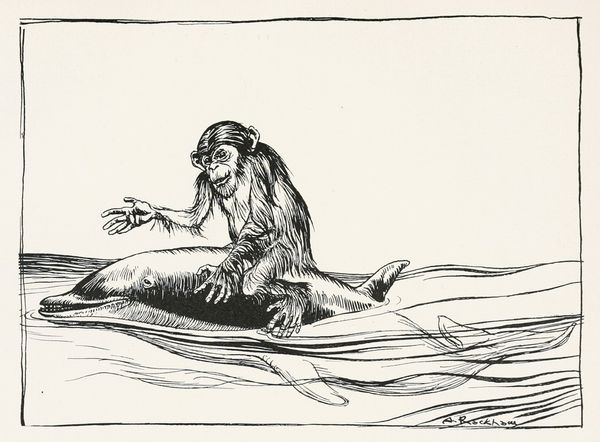
drawing, paper, ink
#
drawing
#
line-art
#
narrative-art
#
paper
#
line art
#
ink
#
folk-art
#
line
#
symbolism
Copyright: Public domain
Curator: This piece by Theodor Severin Kittelsen appears to be an ink drawing on paper, the title roughly translates to "Yes, yes, you shall live." It looks like something from a book of dark fairy tales, doesn’t it? Editor: It absolutely does! The raw, scratchy lines lend it a somewhat ominous and urgent quality. It feels unsettling but compelling at the same time. The two figures appear to be clasping hands; is this a friendly or threatening gesture? Curator: That's the enigma of it. The contrast is central; observe the textures, the application of ink in bold, frantic strokes in places, almost absent in others. Then consider the use of accessible, everyday materials to render figures and themes often only seen in upper-class fine art— suddenly the art production process makes commentary on high versus low culture. Editor: It certainly encourages the viewer to ponder what power structures may be in play! The ink itself, while inexpensive, democratizes art. If we consider that Kittelsen had a tumultuous relationship with Norwegian society and his artistic acceptance, this drawing might signal social commentary. Were such mythological figures and their settings fashionable at the time, or perhaps the domain of a marginalized folk art? Curator: Exactly! Kittelsen was illustrating Norwegian folktales, which would have been viewed by some as lower-class art. Through printing, which facilitates the distribution of this folk art, there can be wider reception that transcends high or low and challenges conventional artistic and cultural boundaries. How does a common material like ink help promote his imagery’s role in political dialogue or national identity? Editor: Fascinating! This work might encourage the popular consumption of nationalist stories through the accessibility of the media. By portraying monsters and mythological beings that resonate culturally, he may have intended this print, these images, for the average Norwegian. But how was it viewed within established galleries and by elite patrons of art, or through art critics, if at all? Curator: Those questions are important and bring nuance to Kittelsen’s broader career, his role in constructing national identity and folklore. Also think of this artwork being reproducible - how might it challenge existing power structures in art? Editor: It feels particularly radical to use these techniques for rendering fantastical creatures – these accessible techniques could definitely allow broader segments of society to consume, relate to, and even identify with mythological themes! Thank you for your observations. Curator: My pleasure, thinking about materials like ink and distribution enables different interpretations!
Comments
No comments
Be the first to comment and join the conversation on the ultimate creative platform.
